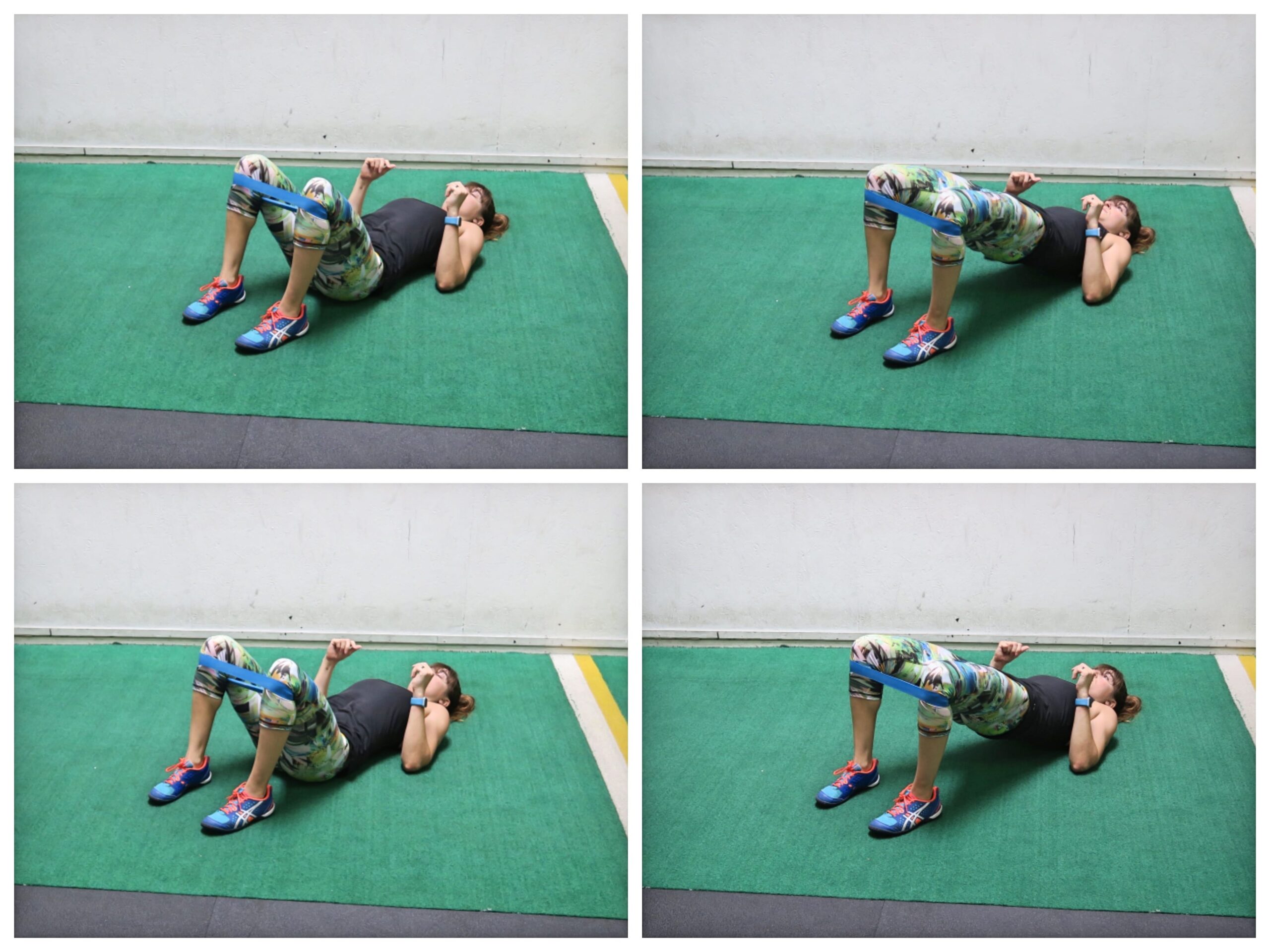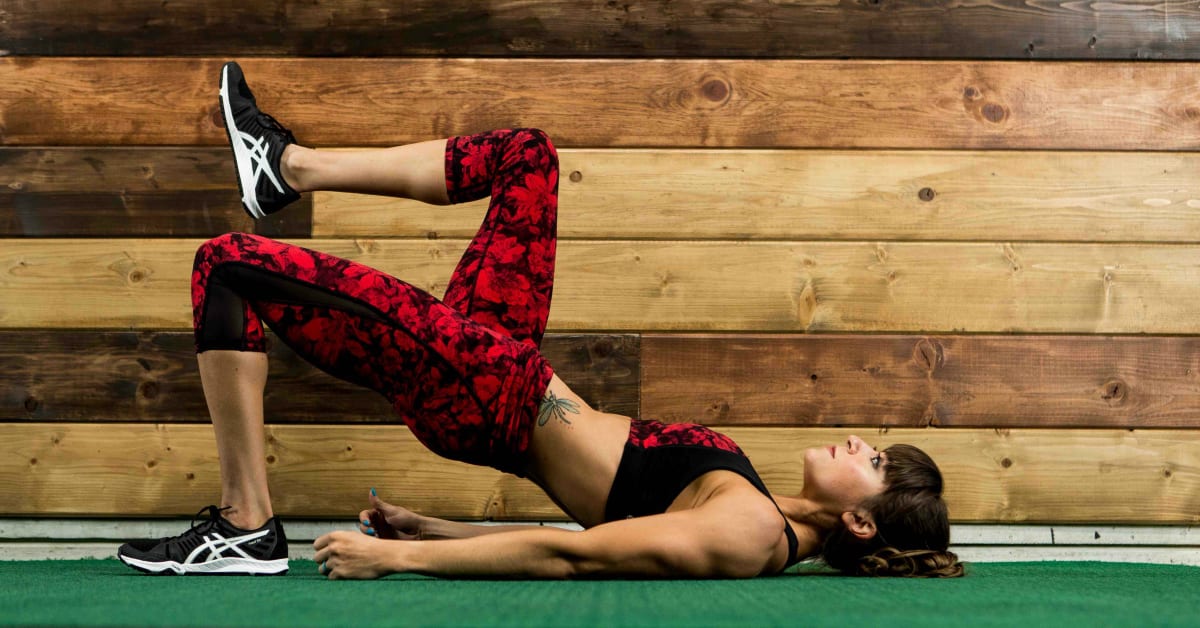Ok…So your butt is not technically “dead” but Dead Butt Syndrome is a very common name for an all too common problem – underactive glutes!
So what does “dead butt” and “underactive glutes” mean?
Dead Butt Syndrome is when your glutes aren’t firing as efficiently or effectively as they should be and therefore other muscles may be compensating to handle the load, leading to aches, pains, overuse and injury.
Because your glutes aren’t working as they should, people have starting saying they are “dead.”
Another term you may hear is that your glutes aren’t “waking up” or activating properly during movements.
This has led to our glutes often also being called the “Sleeping Giant!”
So…why are there all these terms for underactive glutes? And why is it so important we address this problem?
Because, all too many of us end up INJURED because we aren’t performing proper recruitment patterns.
We may even perform movements that “look” correct aka have ideal form and a proper movement pattern, but we may be OVERLOADING muscles not meant to carry the load to perform that movement.
We are COMPENSATING! And the more athletic we are, the more we can often hide these imbalances by overusing other muscles.
Now the question I often get asked is “Well if you’re glutes aren’t working, how can you walk or stand from a chair!?”
Let’s clarify one thing first…Your glutes ARE working. The point though is they aren’t always working as effectively as they should.
Think about a hose with a small kink in it. Water may still come out but it may not be as strong a flow as it should be. Fix the kink and the water pressure improves.
Water is still flowing both ways BUT one way allows the hose to work much better.
The same thing can be said about your glutes!
Improve your hip mobility and your mind-body connection and your glutes work more effectively, allowing you to be stronger and avoid overuse!
So why don’t our glutes fire as effectively or efficiently?
The main reason? Our modern lifestyle!
We’ve heard sitting is killing us, and while that is a bit dramatic, it IS leading to tight hip flexors, which leads to changes in our recruitment patterns during basic daily tasks and movements.
Tight hip flexors can INHIBIT our glutes from firing as effectively. They are that kink in the hose.
And if we don’t address tightness there, we can end up with lower back pain, hip pain and knee pain.
If you aren’t mobile in one area, you may seek out mobility from other.
So if you can’t properly fully extend your hip, guess where you’ll try and get that extension from often?
Your lower back!
Ever feel like you’re constantly arching your lower back to try to replicate the movement you see…say to keep your chest up?
It may be because your hips are tight!
And if your hips are tight and not allowing proper extension, your glutes can’t fire properly.
If you’re glutes aren’t able to fire, you’ll need to use other muscles to lift the load. This is when you may feel your quads taking over. Or your hamstrings. Or even your lower back working.
And when these muscles are asked to do more than their fair share, they can become injured.
High hamstring tendinopathy is all too common these days. So are knee injuries and hip injuries.
And it all relates back to a lack of proper mobility and a lack of glute activation.
AKA DEAD BUTT SYNDROME!
So if you take time to relax overactive hip flexors and activate your glutes, you can help prevent injury and even help yourself run faster and lift more!
Now you may be thinking, “Well I stretch my hips all the time and nothing helps long term.”
This may be because stretching, while it may help to improve your flexibility momentarily, does NOT change how your mind wants to use muscles.
It doesn’t get those underactive muscles ACTIVATED to change your recruitment patterns!
So instead of then using your glutes, you keep overusing those other muscles, which just perpetuates the same muscles becoming tight!
This is why you need a 3 step process to relax overactive muscles and wake up those dead glutes.
You need to foam roll, stretch, activate and then follow that processed with focused strength work or even your runs or rides (want workouts to help you do that? Check out my Glute Camp!).
Below are 3 moves you can do daily to relax tight hip flexors and activate your glutes BEFORE you run or lift.
3 Moves To Relax Tight Hip Flexors And Activate Your Glutes
TFL Foam Rolling:
The TFL or tensor fasciae latae works with the hip flexor muscles to flex the hip and the glute medius to abduct the hip. However, it often inhibits the glute medius from firing correctly when it tries to “take over” which can lead to IT Band, hip and knee pain.
Rolling this muscle can help you properly strengthen your glute medius while improving your glute maximus functioning.

To roll out your TFL, and even your hips, place a ball on the ground then position your body so the ball is just below and outside, or back, from your hip bone. Roll the ball around slowly to find a tight spot and then hold on any tight spots.
If you find a tight spot, hold on that spot and lift and lower your leg up and down. By lifting and lower the leg, you are flexing and relaxing the muscle, which will help loosen everything up as you hold.
As you seek out tight spots in your hip, bring the ball around front and right to the side under your hip bone. Again hold on any tight spots and even flex and relax your leg to help dig in.
You can work your way back out to the side of your hip, and even your glutes as well, if you found any sore or tight spots.
Half Kneeling Hip to Hamstring Stretch:
Especially if you spend a lot of time seated, working at a computer or driving in a car, you want to stretch your your hip flexors.
And if you’re stretching before you workout, it is better to do stretches that move you through a range of motion instead of HOLDING, like a static stretch.
A great stretch to start mobilizing your hip and relaxing your hip flexors, plus stretching your hamstring, is the Half-Kneeling Hip to Hamstring Stretch.

To do the Half Kneeling Hip to Hamstring Stretch, start half kneeling with your back knee about under your hip. Squeeze your glute on that side to drive your hip forward as you reach overhead. This will help you make sure you are getting extension from your HIP and not your lower back. Pause for a second as you squeeze.
Then sit back, lowering your arm as you extend your front leg. Hinge at the hips as you sit back and lean over that leg to feel your hamstring stretch. Then move back to half kneeling and repeat.
Do not arch your lower back as you stretch your hip. Really brace your abs.
And when you sit back in the hamstring stretch, don’t just sit back, actually push your butt back to hinge at the hips and stretch that hamstring.
Mini Band Glute Bridge:
After stretching and rolling, you want to activate those glutes and a great exercise to do that is the Glute Bridge.
Because many of us though also struggle with a weak glute medius, and glute medius weakness can hinder our glute maximus from functioning optimally, a great glute bridge variation to use is the Mini Band Glute Bridge.
By using the mini band, you can help activate your glute medius to improve your hip and knee stability while also working on hip extension and glute maximus activation.

To do the Basic Mini Band Glute Bridge, you will perform a two-leg bridge with the band around your knees. To set up, place the band right above, below or at your knees. Below will be a bit more challenging than above. Make sure though that wherever you place the band, you feel your glutes working. Above the knee can help if you struggle to feel your glutes activating and instead feel your quads taking over.
With the band around your knees, lie flat on your back with your feet flat on the ground about hip-width to shoulder-width apart. Make sure your feet are just beyond your fingertips when your arms are down by your sides. You can move your feet slightly further away if your hips are tight. Make sure that your feet are at least about hip-width apart so that you are forced to press your knees out and open against the band to keep them in line with your ankles and hips.
Bend your elbows to 90 degrees and press your knees out against the band. Then, driving through your heels and upper back and arms, bridge up. Keep pressing out against the band as you bridge up. Do not let your knees cave in. Fully extend your hips and squeeze your glutes at the top. Do not hyperextend your low back at the top. Keep your abs engaged, even maintaining a posterior pelvic tilt.
Hold for a second or two at the top then lower back down and repeat. Do not let your knees cave in as you lower back down. Keep pressing out against the band the entire time!




I went to bed with sore hips from a short run wondering what to do and this morning HERE is the answer!! Thanks ?Doing this as soon as I’m out of my pjs ?
Aw yay! Glad it helps Jennie!
Hi Cori! – thanks for this and ALL your blogs, videos, etc!!
i am a victim or rather my glutes are – i’m curious about the ball you show in the Dead Glutes foam rolling images…i use a much smaller ball at the moment but mostly against the wall…if i go into the fitness warehouse, do i ask for something specific – are there different densities/firmness?
Thanks again for all you share!
Charlene
Hi Charlene. Try the smaller ball even against the ground. Often standing against a wall, while ok to start, isn’t ideal because we tense that leg to push into the ball on the wall…which…well fights against us RELAXING the muscles. I do often use a lacrosse ball to dig in more. This ball though, the 6 inch posture ball I’m using, applies less pressure for those starting out and could be a transition from the wall to the ground if the other is too much pressure. I will admit, part of why I used this over the lacrosse ball is that it is easier to see placement too.
I’ve had total knee replacement on both knees. Any suggestions for exercises that don’t require kneeling or getting down on the floor?
Some of these are a great way to start – https://redefiningstrength.com/7-glute-activation-moves-you-dont-need-to-get-down-on-the-ground-for/
Good timing coming across this on Facebook. I found out last week I have dead butt! Believe it’s causing a lot of my upper cervical issues. Mostly, one side if my body is fast asleep.
Glad it helps! Make sure to do that full 3-part prehab process to see the best results!